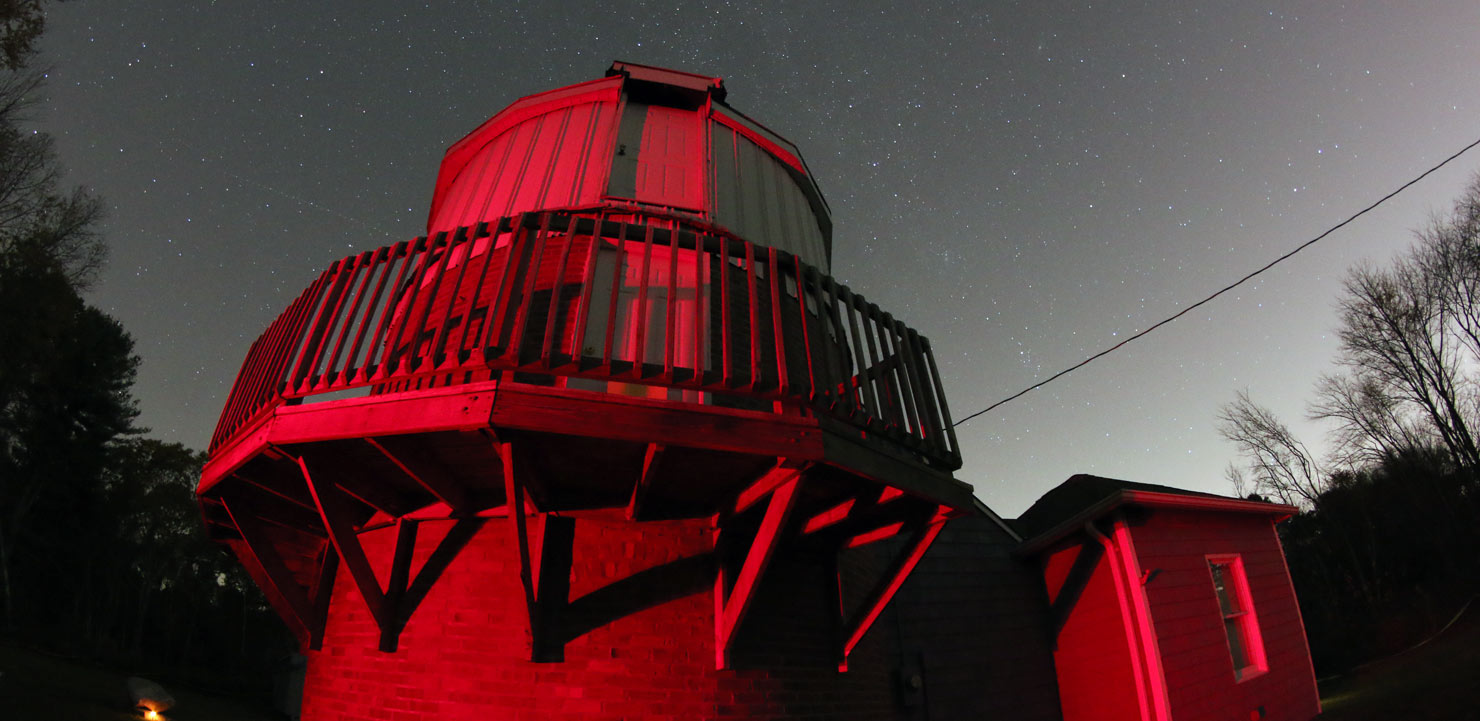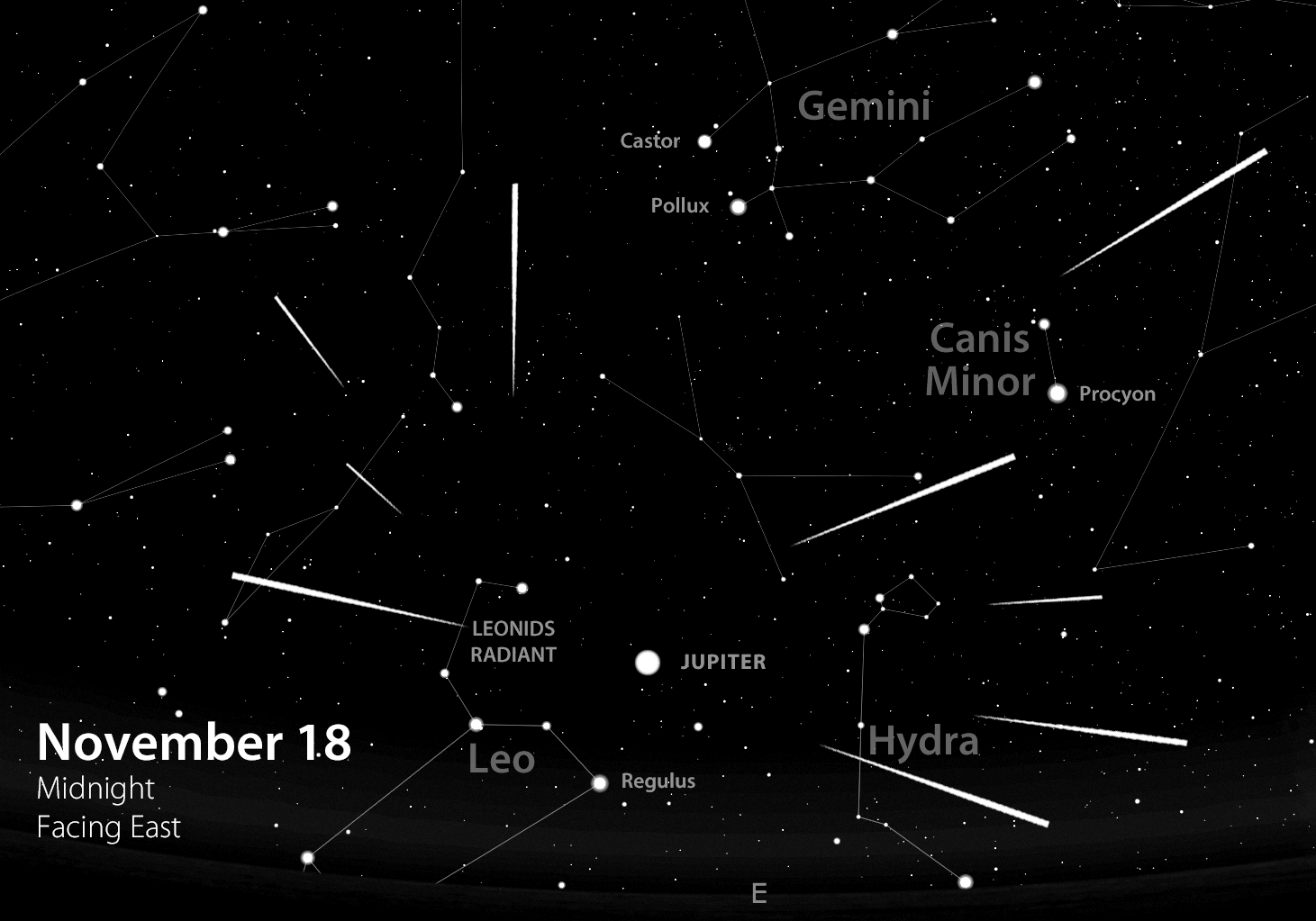
Astronomical Highlights for November
November 2014 :
Note: This article may contain outdated information
This article was published in the November 2014 issue of The Skyscraper and likely contains some information that was pertinent only for that month. It is being provided here for historical reference only.
Before we review some of the astronomical highlights for November, a key ritual to remind everyone about occurs on the second day of the month at 2:00 a.m. That Sunday morning is when most of the United States falls back one hour from Daylight Saving Time to Standard Time. While this biannual resetting of clocks (“spring ahead and fall back/behind”) was simply designed to make better use of available daylight hours during predominantly summer months, its continuance in the modern age has been called into question. Since it is not observed throughout the world (even in the United States Hawaii and parts of Arizona don’t observe it), the time change causes more problems than perceived benefits.
During the first few days of November you can catch a glimpse of the planet Mercury within ten degrees of the east-southeast horizon at dawn. On the 1st Mercury will be about five and a half degrees to the upper left of Virgo’s bright star Spica. Each morning this closest planet to our Sun will be found lower in the sky and will soon be lost in bright twilight.
While Jupiter will finally be rising before midnight in November, you’ll still need to wait a few hours for it to climb above most local tree lines. It will be more reasonably placed in the sky at a more convenient time for most casual stargazers in December, though then you’ll have to deal with the colder temperatures. However, Jupiter is well worth the wait.
Now would be a good time to view our solar system’s two most distant planets—Uranus and Neptune. Both worlds will be visible at least through the rest of 2014. Without a computer-aided telescope, a dark sky is a necessity to locate these worlds. In non-light polluted skies they can be easily found using sky charts. However, if you are unfamiliar with the sky and don’t know how to star-hop, it’s best to visit one of the local observatories and allow the telescope operators to find Uranus and Neptune for you. Currently Uranus is located in the constellation of Pisces, while Neptune can be found in the constellation of Aquarius.
When viewed through a telescope an observer can see the bluish-green disks of these planets. You won’t be able to see any details of these cloud-enshrouded worlds, but how many people can say they actually observed Uranus and Neptune? With a ten-inch telescope one can observe Ariel and Umbriel, two of Uranus’ five major (out of 27 known) moons. That same telescope will reveal Neptune’s largest of 13 known moons, Triton.
Refer to these finder charts for Uranus and Neptune from freestarcharts.com.
And finally, the only meteor shower of any consequence this month occurs on the night of November 17-18. Though the Leonid peak activity occurs during daylight hours for us in the United States, between midnight and dawn on the 18th we can expect perhaps 10-15 bright shooting stars per hour to blaze across the sky. And I do mean blaze!. The meteors associated with this shower are the fastest known, hitting the Earth’s atmosphere nearly head-on at about 44 miles per second. For this reason the display produces many fireballs, with about half of them leaving trains of dust which can persist for minutes.

While the usually green or blue meteors can be seen practically anywhere in the sky, you know you’ve spotted a Leonid if you can trace the meteor’s path back to the shower’s radiant point (where the meteors appear to emanate from) in the Sickle (backwards question mark) asterism in Leo. See accompanying finder chart.
The waning crescent Moon will rise around 2:30 a.m. locally, but its slight illumination will not overshadow many of the Leonids. So though it may be a little chilly to watch this display of shooting stars, should sky conditions be favorable you’ll want to spend an hour or two scanning the skies.
While one does not require a telescope to observe a meteor shower, the local observatories do provide excellent views of the Moon, planets and deep sky objects like nebulae, star clusters and galaxies. Explore the riches of our Milky Way galaxy or peer into the farthest reaches of our universe.
Seagrave Memorial Observatory in North Scituate is open to the public every clear Saturday night. Ladd Observatory in Providence is open every clear Tuesday night. Frosty Drew Observatory in Charlestown is open every clear Friday night year-round. Be sure to check the websites of these facilities before venturing out for a visit.
Keep your eyes to the skies.



